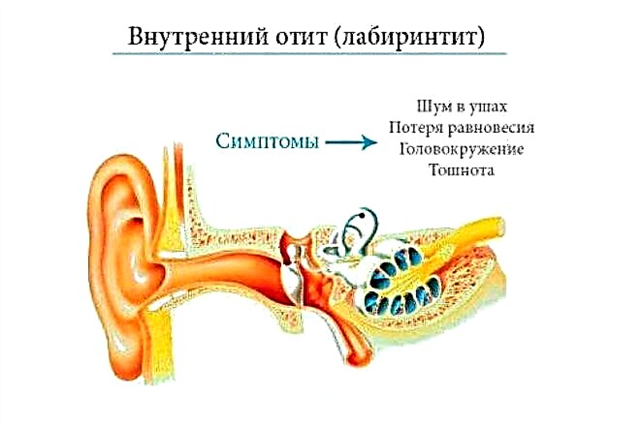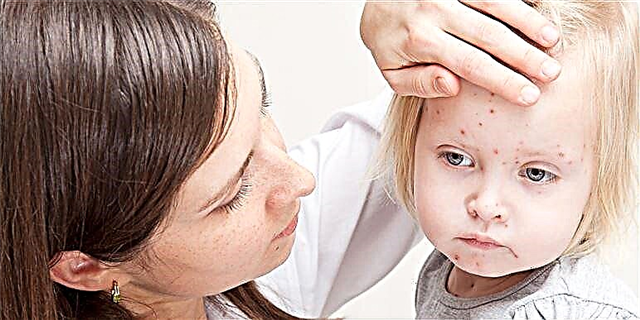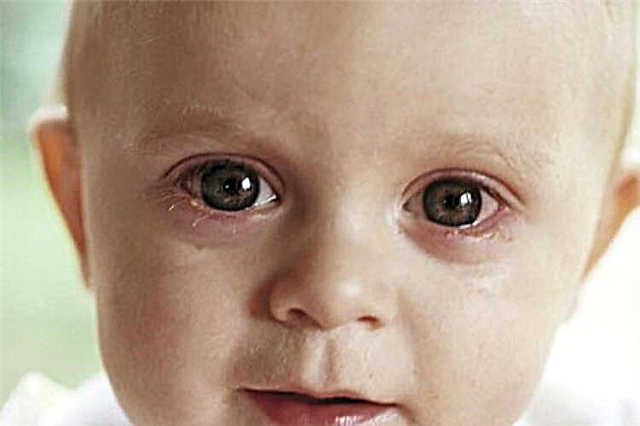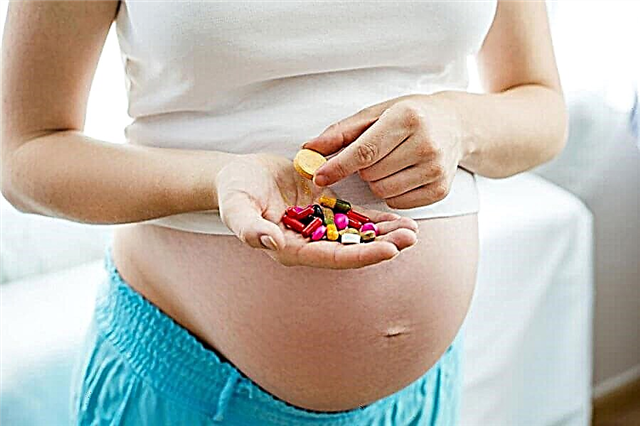
Children and their parents encounter such ailment as otitis media quite often. Medical statistics say that every child has had ear inflammation at least once in their life, and up to three years, more than 80% of children have already suffered from this disease. Every eighth baby has chronic otitis media. The well-known children's doctor Yevgeny Komarovsky tells about why the ears of children become inflamed, and how to treat this condition.

About the disease
Otitis media in children can be of three types. Depending on the localization of the inflammatory process, the ailment can be external, medium or internal. The inflammatory process can be concentrated or diffuse, affecting the eardrum and other structures of the ear. According to the duration of the disease, otitis media are divided into acute and chronic. And the presence or absence of pus divides otitis media into two types - catarrhal (without pus) and exudative (with pus).
Bacteria, viruses and allergens can cause inflammation. They enter the auditory tube with improper blowing, sneezing, sniffing, which accompany any respiratory infection.
Therefore, it is obvious that otitis media itself is rare, much more often it is a complication of a viral infection. The external one is most often manifested by boils in the area of the auricle, this is a completely independent disease that is caused by microbes. Allergic otitis media is a type of reaction of a child's body to a protein antigen, it is extremely rarely purulent, but accompanied by severe swelling. If the inflammation is localized only in the auditory tube, it is called tubo otitis.

Some children rarely get sick with otitis media, others often. This, according to Evgeny Komarovsky, depends not only on the immunity of this particular child, but also on the anatomical features of the structure of this particular ear.
Children with a short auditory tube have more frequent otitis media. With age, the tube "catches up" in length and diameter of the norm, takes a more horizontal position, and frequent otitis media become rare or disappear altogether.
Symptoms
Otitis externa is hard not to notice - the auricle turns red, sometimes visually, without special medical instruments (otoscope and a mirror), you can see a boil or abscess, the child develops a pulsating pain typical of all abscesses. Hearing may deteriorate somewhat only at the moment when the abscess breaks through and pus enters the auditory tube.

Otitis media manifests itself as "lumbago" in the ear, the pain intensifies, and then subsides for a short time. There may be a slight hearing loss, headache, lack of appetite, dizziness, disorders of the vestibular apparatus, increased body temperature. A child who, due to age, already knows how to speak, is quite able to tell what worries him. A kid who has not yet learned to speak will often touch his ear, rub it, cry.

The most difficult thing to diagnose at home is otitis media in infants. But there are signs that will help parents figure out what exactly bothers the baby:
- While sucking, the baby's anxiety increases.
- If you press on the tragus (the protruding cartilage near the ear canal), the pain will intensify, the baby will cry harder.
- If you attach the baby to yourself while feeding with a sore ear, it will become a little easier for him.
With any suspicion of otitis media in an infant, even if the ailment is not accompanied by fever or fluid from the ears, you should definitely show the baby to the doctor.

Otitis media in the overwhelming majority of cases is also not an independent ailment, but occurs in the case of improper treatment of otitis media, an advanced form of this disease, as well as a complication of meningitis... It can manifest itself in a couple of weeks after suffering a viral illness with severe sudden dizziness. Often there is noise in the sore ear, hearing decreases. For diagnostics, you definitely need a doctor who will prescribe an MRI of the brain, tone audiometry.

Treatment according to Komarovsky
Evgeny Komarovsky warns mothers and fathers that otitis media cannot be treated for a child using folk remedies and a recipe for alternative medicine, because the complications of the disease can be very severe - from the transition of an acute form to a chronic one, and then the child will be harassed by frequent otitis media, before deafness, facial paresis. nerve, meningitis, etc. Therefore, to bury heated oil with aloe or walnut juice is a real parental crime.
With purulent otitis media, it is absolutely impossible to warm up anything, make warming and alcohol compresses, bury warm oil, as caring grandmothers and traditional healers may advise. From such heat, the inflammatory exudative purulent process will only worsen.
Treatment of acute (sudden onset) otitis media in a child Evgeny Komarovsky recommends starting treatment with the instillation of vasoconstrictor drops into the nose. They not only reduce the lumen of blood vessels in the nasal mucosa, but also relieve swelling in the area of the auditory tube. For this, "Nazivin", "Nazivin Sensitiv" (if the child is an infant), "Nazol baby" are suitable.
The main thing to remember is that these drops do not drip for more than five days, since they cause persistent drug addiction, and you need to choose baby drops in the pharmacy, the dosage of the active substance in which is lower than in similar adult preparations.
Vasoconstrictor drops are relevant only at the very initial stage of acute otitis media, when there is a chance to prevent its further development. If the chance remains unrealized or the attempt was unsuccessful, you should immediately contact an otolaryngologist who will establish the type of disease, and upon examination, will find out if the eardrum is damaged. If it is intact, you can use ear drops, if it is damaged, which happens quite often, then nothing can be dripped into the ear.
If pus is flowing from the ear, then Komarovsky calls for abandoning self-medication, not dripping anything anywhere before going to the doctor.
Suppuration with a high degree of probability indicates a perforation (breakthrough) of the tympanic membrane, through this opening pus enters the outer ear. In case of perforation, it is impossible to drip at the ear so that the medicine does not get on the auditory nerve, auditory ossicles and cause deafness.

If otitis media is accompanied by an increase in temperature, then it is reasonable to use antipyretic drugs and pain relievers. To reduce high fever, it is advisable to give children "Paracetamol" or "Ibuprofen". Both of these medications have a mild pain relieving effect. Doctors often prescribe a drug such as Erespal. It can be taken in syrup form for children over two years old. Children are not given this medicine in tablets.
Do you need antibiotics?
Although most parents believe that antibiotics are required in the treatment of otitis media, this is far from always the case, says Evgeny Komarovsky. With exudative otitis media, which is asymptomatic and caused by the accumulation of fluid in the middle ear cavity, antibiotics will have no effect on the healing process. Usually, such otitis media goes away on its own as the child recovers from the main viral disease - ARVI or flu.
Otitis media, accompanied by pain, "shooting" in the ear, can be caused by both bacteria (against which antibiotics are effective) and viruses (against which antibacterial drugs are completely ineffective).
Evgeny Komarovsky advises to wait about 2 days before starting active treatment. If there is no improvement on day 2-3, this is a signal to prescribe antibiotics to the child.
It is allowed not to wait two days if the baby's otitis media is difficult, with a high fever, very severe pain, and if the child is not yet 2 years old, the doctor will most likely prescribe antibiotics right away. For babies who have not reached the age of two, it is very important what kind of otitis media they have - unilateral or bilateral.


In the treatment of otitis externa, antibiotics are rarely required; antiseptic treatment is usually sufficient. Otitis media requires symptomatic treatment, antibiotics for labyrinthitis are also rarely prescribed.
In any case, the doctor should decide on the appointment of antibiotics for inflammation of the hearing organs after conducting appropriate research, including bacterial culture from the ear to determine the type of pathogen. If such a culture shows the presence of certain bacteria, the doctor will prescribe exactly the antibiotic that is most effective against specific microbes.

The method of using antibiotics for ear inflammation, according to Evgeny Komarovsky, is prescribed individually. If the eardrum is intact, the doctor may advise drops with antibiotics, but most often antimicrobial drugs are prescribed in tablets, and this is quite enough. The child does not need to inject medicine.
For the effectiveness of treatment, it is important that the drug accumulates in the problematic sore spot, and therefore, with otitis media, antibiotics are taken for a long time and in increased doses. The minimum course is 10 days. If the child is under two years old and if he is attending kindergarten, the course is not reduced. If the baby is over 2 years old and does not go to kindergarten, the doctor may prescribe him antibiotics for only 5-7 days. Respecting the timing and dosage is very important to reduce the risk of recurrent otitis media.

Otitis media and deafness
In almost all types of otitis media, hearing decreases to one degree or another. Evgeny Komarovsky advises to treat this as an inevitable situation. Otitis media can only lead to deafness or persistent hearing loss if the inflammation has not been properly treated, the auditory ossicles or the auditory nerve are affected.
Children who have undergone successful treatment for otitis media retain hearing loss for some time. He recovers on his own within 1-3 months from the end of treatment.

Surgery
Usually surgery is not required for otitis media. The exception is cases when a child with severe and prolonged pain and suppuration in the ear cavity does not rupture the tympanic membrane. Its strength is individual for each child, in some, already in the initial stage, otitis media flows from the ear, in others, perforation does not occur. Then there is a risk of a breakthrough of purulent masses anywhere, including the brain. If there is such a threat, doctors make a small incision in the eardrum to allow the pus to drain.
Evgeny Komarovsky reassures that a ruptured eardrum and its incision are not dangerous for the child. Usually it quickly recovers, only a small scar remains, which in no way subsequently affects a person's hearing.

Compress for otitis media
The compress should be dry, it is not required to wet it with anything. For its preparation, cotton wool and a small piece of polyethylene are enough. Cotton wool is applied to a sick child's ear, covered with polyethylene on top and tied with a scarf or a hat. Thus, the ear is somewhat "isolated" from the environment, less traumatized, including by loud sounds. In addition, a cotton compress is very useful for a sick mother, she is so calmer. Traditional medicine no longer sees any benefits from a compress, since it does not affect either the risk of complications or the duration of the inflammatory process.

Prevention
Mothers should teach their child to blow their nose properly. Most often, they simply pinch the nozzle of the child and demand to blow. The child blows, but when the nose is clamped in the handkerchief by the mother's hands, the snot does not go where the mother wants it, but into the auditory tube, disrupts the air exchange, accumulates and inflammation begins. Mothers need to know that a child's auditory tube is much narrower than that of an adult, and, therefore, the likelihood of its blockage is higher.
Do not give the child water or a mixture from a bottle while lying down, as there is a great risk of liquid entering the auditory tube.

Otitis most often accompanies children in the cold season and during periods of mass incidence of viral respiratory infections. At this time, it is better not to allow the child to be in crowded places, walks in the fresh air away from the crowd, shopping centers and confined spaces are welcome.
Too dry air in an apartment is one of the likely causes of frequent otitis media in a baby. Maintain the optimal temperature (18-20 degrees) and humidity (50-70%), do wet cleaning more often, avoid situations in which your child becomes a passive smoker and is forced to breathe tobacco smoke. Send all smoking family members outside, do not smoke in the car in which you carry your baby, so you can significantly reduce the likelihood of such an unpleasant ailment as allergic otitis media.

Get all age-appropriate vaccinations for your child... A frequent causative agent of otitis media is Haemophilus influenzae. They are now vaccinating against her. Another "culprit" of inflammatory processes in the ear cavity is pneumococcus. There is also a vaccination against pneumococcal infection. And if moms and dads do not refuse vaccination, the risk of developing severe otitis media can be significantly reduced.

For more information about otitis media, see the program of Dr. Komarovsky.



